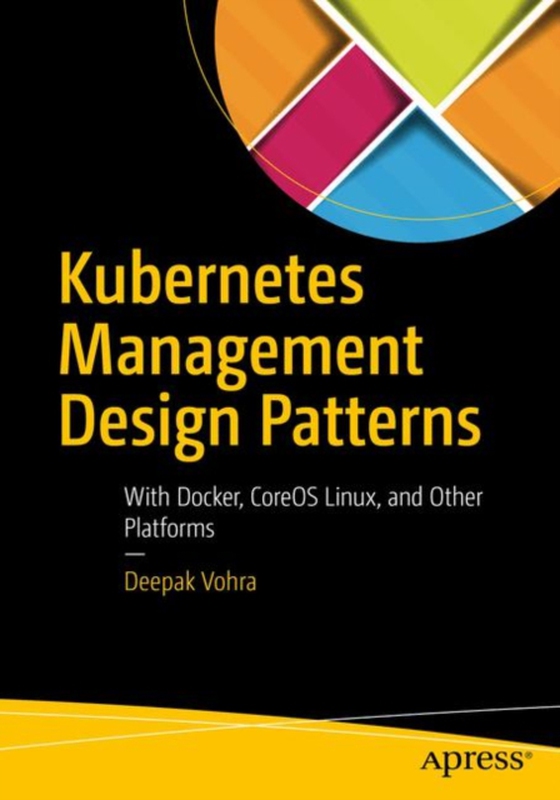
Kubernetes Management Design Patterns e-bog
504,55 DKK
(ekskl. moms 403,64 DKK)
Take container cluster management to the next level; learn how to administer and configure Kubernetes on CoreOS; and apply suitable management design patterns such as Configmaps, Autoscaling, elastic resource usage, and high availability. Some of the other features discussed are logging, scheduling, rolling updates, volumes, service types, and multiple cloud provider zones. The atomic unit of ...
E-bog
504,55 DKK
Forlag
Apress
Udgivet
20 januar 2017
Genrer
UKF
Sprog
English
Format
epub
Beskyttelse
LCP
ISBN
9781484225981
Take container cluster management to the next level; learn how to administer and configure Kubernetes on CoreOS; and apply suitable management design patterns such as Configmaps, Autoscaling, elastic resource usage, and high availability. Some of the other features discussed are logging, scheduling, rolling updates, volumes, service types, and multiple cloud provider zones. The atomic unit of modular container service in Kubernetes is a Pod, which is a group of containers with a common filesystem and networking. The Kubernetes Pod abstraction enables design patterns for containerized applications similar to object-oriented design patterns. Containers provide some of the same benefits as software objects such as modularity or packaging, abstraction, and reuse.CoreOS Linux is used in the majority of the chapters and other platforms discussed are CentOS with OpenShift, Debian 8 (jessie) on AWS, and Debian 7 for Google Container Engine. CoreOS is the main focus becayse Docker is pre-installed on CoreOS out-of-the-box. CoreOS: Supports most cloud providers (including Amazon AWS EC2 and Google Cloud Platform) and virtualization platforms (such as VMWare and VirtualBox)Provides Cloud-Config for declaratively configuring for OS items such as network configuration (flannel), storage (etcd), and user accounts Provides a production-level infrastructure for containerized applications including automation, security, and scalabilityLeads the drive for container industry standards and founded appc Provides the most advanced container registry, Quay Docker was made available as open source in March 2013 and has become the most commonly used containerization platform. Kubernetes was open-sourced in June 2014 and has become the most widely used container cluster manager. The first stable version of CoreOS Linux was made available in July 2014 and since has become one of the most commonly used operating system for containers. What You'll LearnUse Kubernetes with DockerCreate a Kubernetes cluster on CoreOS on AWSApply cluster management design patternsUse multiple cloud provider zonesWork with Kubernetes and tools like AnsibleDiscover the Kubernetes-based PaaS platform OpenShiftCreate a high availability websiteBuild a high availability Kubernetes master clusterUse volumes, configmaps, services, autoscaling, and rolling updatesManage compute resourcesConfigure logging and schedulingWho This Book Is ForLinux admins, CoreOS admins, application developers, and container as a service (CAAS) developers. Some pre-requisite knowledge of Linux and Docker is required. Introductory knowledge of Kubernetes is required such as creating a cluster, creating a Pod, creating a service, and creating and scaling a replication controller. For introductory Docker and Kubernetes information, refer to Pro Docker (Apress) and Kubernetes Microservices with Docker (Apress). Some pre-requisite knowledge about using Amazon Web Services (AWS) EC2, CloudFormation, and VPC is also required.
 Dansk
Dansk

